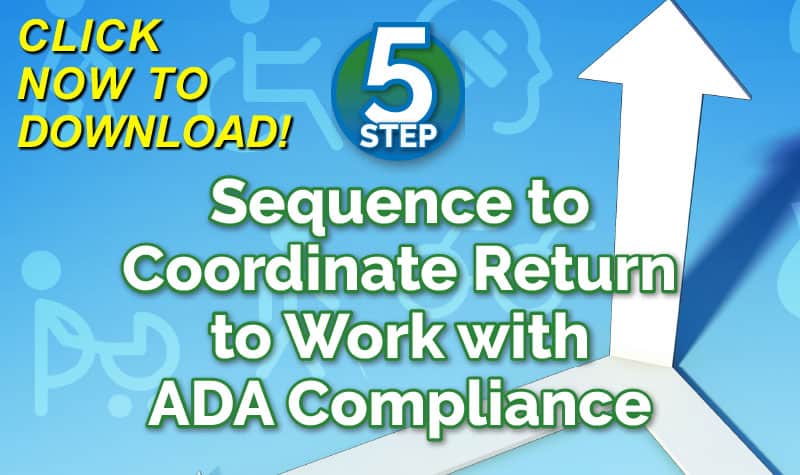
Delayed Medicare Care Following a Work Injury
Managers and supervisors are critical in providing effective and immediate post-injury care. When care is not provided correctly following an injury, the result can mean added costs and improper diagnosis. Losing valuable time in providing proper medical care also impacts the perception of how an employer values their employees.
- Provide Effective and Complete Safety Training: Proper safety training is the best offense against any work injury. This should include the identification and remediation of hazards within the workplace. This is something that should be talked about every week.
Click Link to Access Free PDF Download
“How Do I Get My Adjusters To Follow My Account Handling Instructions?”
- Properly Stocked First Aid Kits that Are Accessible: It is crucial to ensure all employees have access to a first aid kit to treat any injury. Go beyond the basics of band-aids and medical tape. Consider having automated external defibrillators (AEDs) in your workplace.
- Subscribe to Telephonic Triage Nurse Service: A telephonic nurse triage service is affordable and cost-effective. This allows employees and their supervisors to have access to a nurse to assist in injury identification, diagnosis, and recommendations for all non-life-threatening work injuries.
- Establish a Preferred Provider Organization (PPO): Employees hurt on the job are generally never required to receive medical care at a specific healthcare facility. This should not mean employers become disengaged in helping to direct medical care. It is easy to establish a PPO that provides savings and can be used to best direct post-injury medical care.
Employers should also never hesitate to demonstrate empathy to all injured employees. This can include sending an employee a “get well soon” card or having a manager make weekly telephone calls to check in with an employee.
Prevent Unintended Disability and Wage Loss
Removing disincentives and getting an employee back to work following a work injury pays long-term dividends in every workers’ compensation program. Employers are vital in reducing the wage loss benefits paid on a claim. A review of any program should determine how the employer and insurer can work together to minimize money spent.
- Establish a Return-to-Work Coordinator: Every employer, regardless of size, should have a dedicated return-to-work This person must be a conduit between all stakeholders – the claiming team, employees, and medical providers. The role is to have influence within an organization and find light duty, full duty, or work on loan options following a work injury.
- Prepare Legitimate Job Offers: Part of an effective return-to-work program ensuring all job offers are reasonable. This includes considering the need for every employee to feel valued and challenged within their position. Too often, light-duty work involves sitting at a desk and pushing papers. When preparing a job offer, consider how it will be received from the employee’s standpoint. Ensure the question is asked whether the person receiving the office will find value in their work.
- Remove Disincentives to Work: Some employers unknowingly provide additional benefits to employees to promote a better workplace. The unintended consequence is those same benefits encourage employees to stay off work. Examples include wage continuing programs, collateral source benefits, and other perks. Employers should be willing to examine these benefits and determine if they have the desired effect. If they impact the workers’ compensation program, an immediate change is required.
Every supervisor, manager, and member of upper-level management should receive training in cultural competency and how to treat people with respect. Injured employees often feel their self-worth is being questioned when reporting a work injury. Encourage everyone in a management-type position to receive an injury report with sincerity and non-judgmental. When employees recognize they are valuable members of an organization, they seek to return to work promptly.
Conclusions
Employers play an essential role in reducing workers’ compensation program costs. This requires their representatives to provide immediate medical care that is effective. This requires steps that go beyond having a first aid kit. Employers who want to be dynamic should also focus on returning to work that includes a high level of dignity.

Contact: mstack@reduceyourworkerscomp.com.
Workers’ Comp Roundup Blog: http://blog.reduceyourworkerscomp.com/
©2022 Amaxx LLC. All rights reserved under International Copyright Law.
Do not use this information without independent verification. All state laws vary. You should consult with your insurance broker, attorney, or qualified professional.







